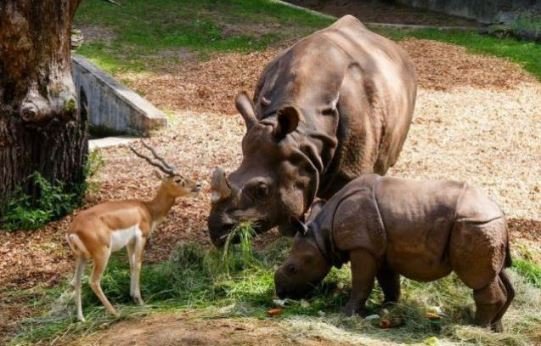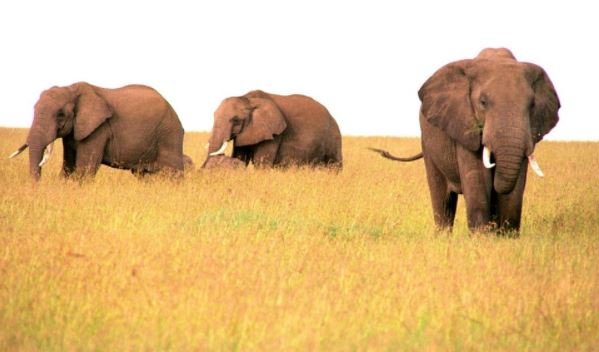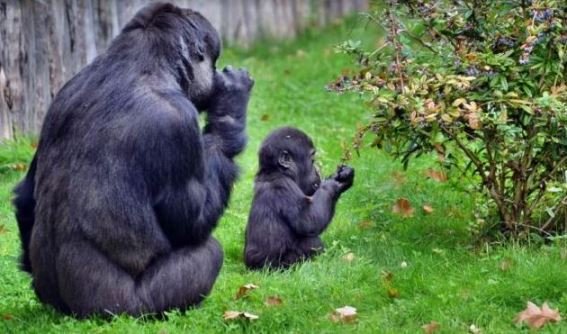Illegal Animal Poachers Are In Trouble; As New Artificial Intelligence Is Set To Screw Them Up
Various countries of the world are endowed with natural wildlife resources, and African is perhaps the most endowed continent when it comes to the wild.
Studies and researchers have shown that Africa is home to some of the rarest and iconic wildlife in existence, but acts of illegal poachers have become a massive threat to so many of the endangered species still present on the continent.

Illegal poaching has led to a rapid decrease in the population of animals such as elephants, lions, tigers, rhinos, gorillas, etc.; as they are gradually on the brink of extinction owing to the actions of illegal poachers, who prey and hunt these animals for their various natural benefits and resources.
In the last 50 years, thousands of animals have been poached at great lengths, leading to the apparent extinction of this natural wildlife.
Why are these animals poached?
Some of these animals have valuable body parts such as tusks, hides and skin, horns, bones, etc. When these fellow earthlings are killed their parts get sold illegally for huge amounts of money.
For instance;
- Rhino Horn – is believed to cure impotence, hangover, fever and the dreaded cancer. These beliefs are still largely unsubstantiated; yet so many Rhinos have had to die based on such beliefs. As crazy as it may sound, a pound of rhino horns sells for about $30,000. A pound of Gold on the other hand sells for about $22,000
- Ivory from Elephant Tusk – is carved into sculptures, jewelleries, religious figurines, trinkets, utensils, etc. Illegal ivories are largely traded in Asia, where they are traded even on the streets for about $1,000 a pound.
- Infant Gorillas – in recent years, are being traded illegally. One infant gorilla sells for about $40,000
And if illegal poaching continues at its alarming rate, despite government regulations and wildlife conservation efforts, then some of these wildlife animals will become extinct in our time.
What is the level of damage that has been done already?
| Animal | Rate of Damage |
|---|---|
| Black Rhino | Its population since 1960 has dropped by 97.6% (Almost Extinct) |
| Mountain Gorilla | Less than 1000 of these still exist |
| Lion | They are currently extinct in 7 African countries |
| African Elephant | About 35,000 were killed last year |
| Grevy Zebra | Just about 2000 adults still exist |
The Shocking reality of things
At the present rate of illegal poaching, some of world’s iconic wildlife such as Lions, Rhinos, Elephants, and other African wildlife species may soon kiss our planet goodbye. As it stands now in Africa, some of the wildlife have been classified based on 3 categories.
- 1.) Vulnerable – Elephants, Lions
- 2.) Endangered – Zebras
- 3.) Critically Endangered – Rhinos, Mountain Gorillas
The desire for wildlife conservation coupled with technology is to become the game-changer
Man’s desire to conserve nature’s gifts such as wildlife has pushed various governments to enact laws and regulations to fight against illegal poaching. While these have been useful in some countries, a lot still needs to be done.
As always science and technology never seems to turn its back on us when we need it. Presently, in a bid to fight the high rate of illegal poaching of endangered wildlife species, technology has come to the rescue.
A group of researchers at the University of Southern California’s (USC) Centre for Artificial Intelligence in Society, have decided to go a step further in their use of Artificial Intelligence (AI) to protect wildlife resources.
Technology to the rescue
Before this time, computer scientists made use of AI and the theory of gaming to predict the activities of poachers. However, science and tech have aided a step-up; as the scientists have now applied AI and a deep learning mechanism to anticipate and identify poachers in near real-time or less than a second.
Most poaching activity takes place at night, and devices such as infrared cameras which are used to monitor living organisms, virtually functions by detecting heat signature of living organisms. And since both the animals being hunted and the poachers give off heat, it makes the whole process of monitoring streams of all-night poaching activities very challenging and time consuming.
The challenge inspired Elizabeth Bondi, a PhD student of the University of South California’s Viterbi School of Engineering to lead a team of computer scientists to tinker with Artificial Intelligence to expedite the process of wildlife monitoring and conservation. They scientists used 180,000 labelled infrared videos of humans and animals, and applied them to an existing deep learning algorithm called the “Faster RCNN”. The Faster RCNN was then modified to tutor a computer on how to automatically differentiate between infrared images of humans from that of animals.
Challenges encountered and subsequent A.I. modification
The A.I creation didn’t function effectively from the onset. Despite its development, there was the challenge of deploying the algorithm to the field using laptops at base stations where footage is streamed from drones that are used to patrol national parks in countries like Malawi and Zimbabwe.
The AI Algorithm functioned accurately but took 10 seconds to process each video or image and this was too long a time, especially for organised and syndicate poachers using vehicles. Hence, the scientists decided to modify the algorithm even further to work with Microsoft Azure, so that a regular laptop can use it. They also built a virtual system with a faster processing and developed alternative interconnectivity in rural areas to make the software work from a laptop. This modification effected the amazing technology that now enables the algorithm to detect poachers in near real-time or in just three-tenths of a second.
The new algorithm is now aptly named Systematic POacher deTector or “SPOT”, and will now be utilised on a large scaled across Botswana.
Conclusion
The new and amazing AI technology is now set to identify poachers of wildlife in remarkable and quick time of less than half a second or near real-time. The SPOT tech would surely ease some of the burden from monitoring teams using drones for illegal poaching detection. SPOT would provide analysis of detections quickly and quite accurately.
With more adoption of “SPOT” at a global level and scale, the new innovation, courtesy of the technological advancement of Artificial Intelligence by the USC computer scientists, would definitely lead to a drop in the population decline of wildlife, especially in Africa, due to poaching activities across various Safari and Wildlife Reserves and Parks, which have become home to so many of Africa’s iconic wildlife species.
Image Source: Pixabay [1], [2], [3], [4], [5], [6]
Reference:
Thank you for your time and for reading my post.
If you found this post interesting, then kindly UPVOTE, RESTEEM and FOLLOW @rickie, for more quality posts.
You Can Check Out My Other Posts Below:
- The Vision of Praying Mantis Can Inspire Simpler Vision-Processing For Robots
- Undiscovered and Unknown Viruses Can Now Be Hunted To End Global Viral Pandemic
- A Device For Administering Drug Directly To The Brain Is To Become Neurological Game-Changer
- Science Says Casual Sex is Freaking Healthy, So Do It
- Is it possible to die from laughter?
- Scientists Discover Antibacterial Properties Of Dragonfly Wings






Always awesome news when someone figures out how to thwart these people :)
Yes, i agree @tfcoates. Any means to stop some of the indiscriminate poaching acts would be highly welcomed. Illegal poachers are doing much harm to wildlife all over the world.
Congratulations! This post has been upvoted from the communal account, @minnowsupport, by Rickie from the Minnow Support Project. It's a witness project run by aggroed, ausbitbank, teamsteem, theprophet0, someguy123, neoxian, followbtcnews, and netuoso. The goal is to help Steemit grow by supporting Minnows. Please find us at the Peace, Abundance, and Liberty Network (PALnet) Discord Channel. It's a completely public and open space to all members of the Steemit community who voluntarily choose to be there.
If you would like to delegate to the Minnow Support Project you can do so by clicking on the following links: 50SP, 100SP, 250SP, 500SP, 1000SP, 5000SP.
Be sure to leave at least 50SP undelegated on your account.